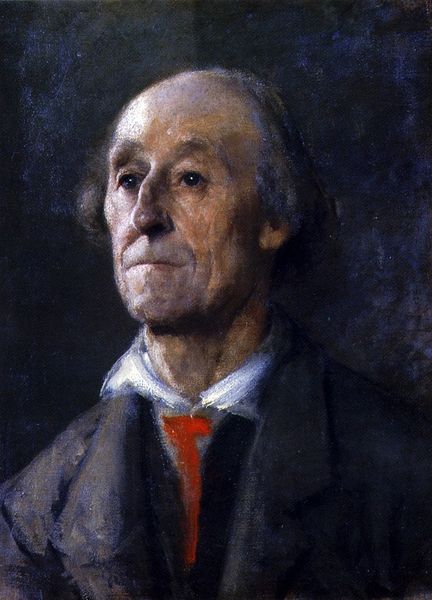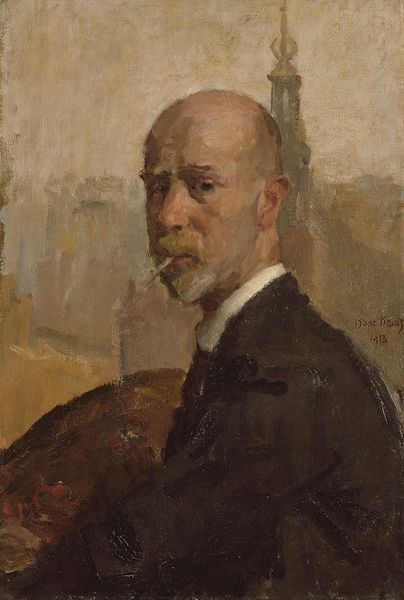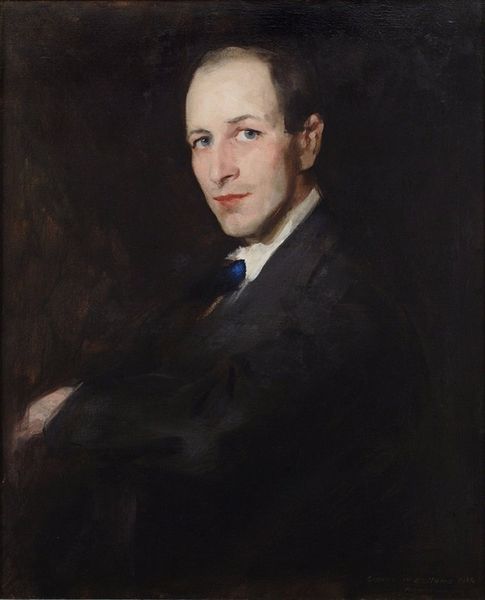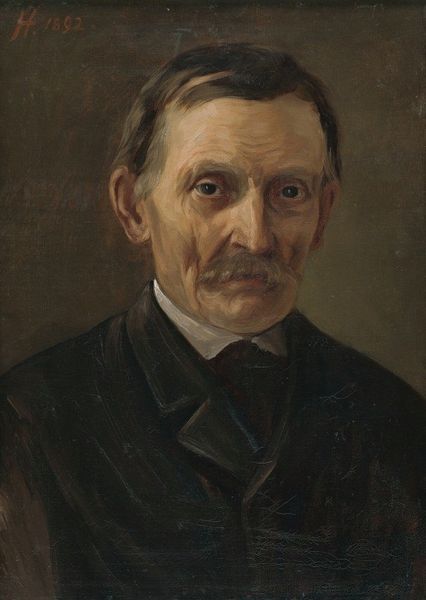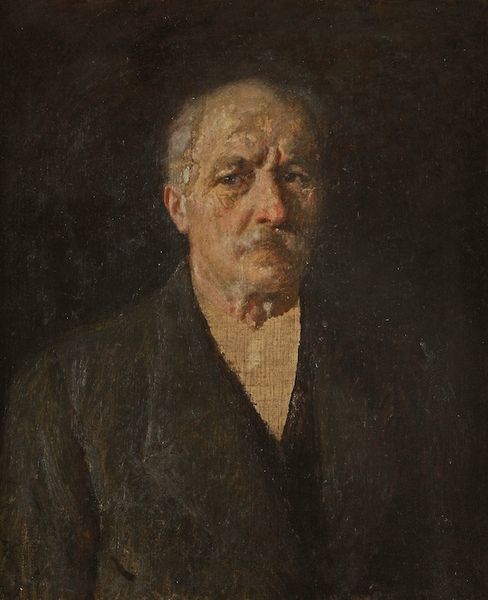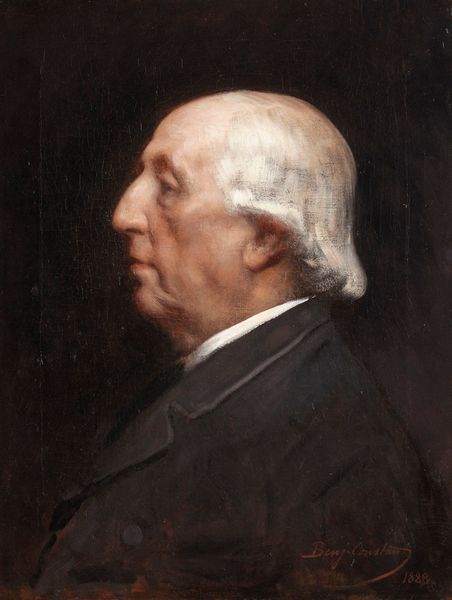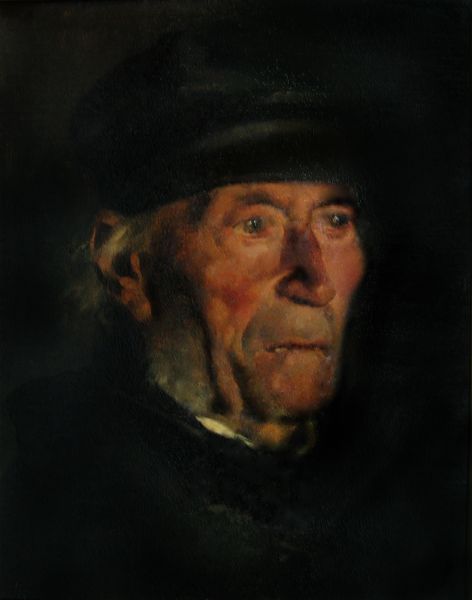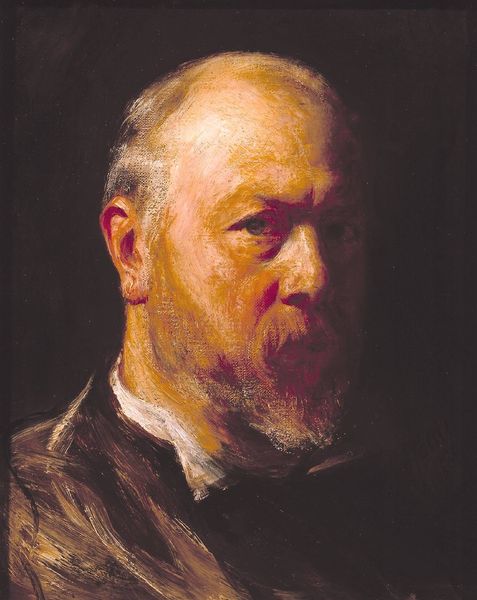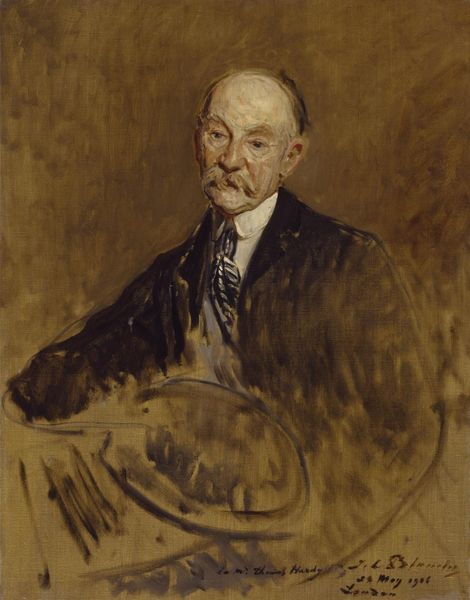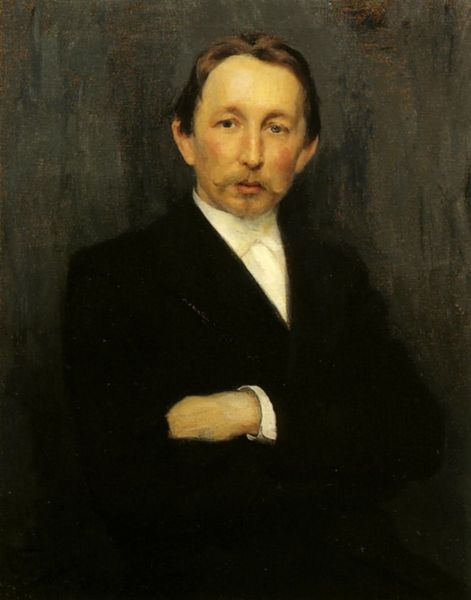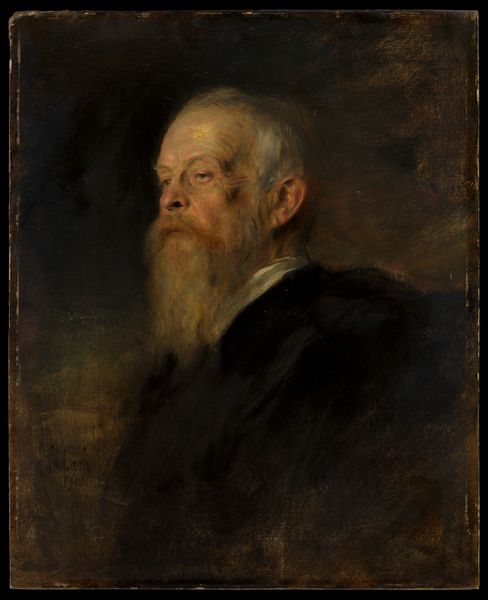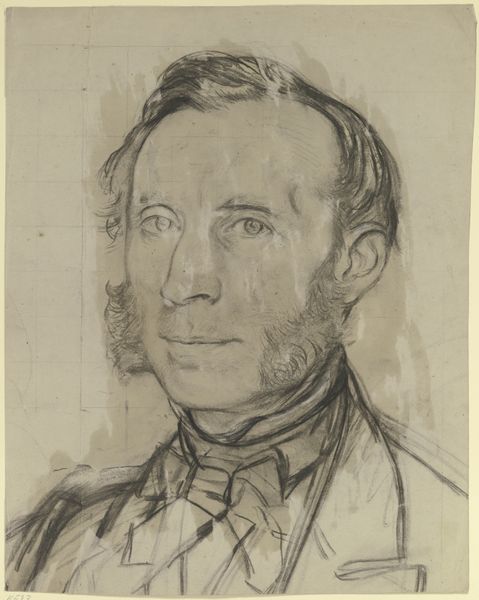
painting, oil-paint, impasto
#
portrait
#
portrait
#
painting
#
oil-paint
#
impasto
#
italian-renaissance
#
realism
Dimensions: 49 x 34.8 cm
Copyright: Public domain
Curator: Well, if it isn’t the “Head of an Old Man,” a poignant piece rendered around 1890 by Pellizza da Volpedo. Editor: Immediately, I feel the weight of experience in this portrait. It’s in the downward gaze, the texture of his skin... a life lived, etched onto his face. Is it me, or is there a sense of weary acceptance there? Curator: Volpedo, even though associated with Italian Renaissance, channels, here, the Realism movement with such a compelling honesty. There is no romanticizing old age here, no false flattery; this painting represents truth, captured deftly using oil paints and bold impasto techniques. The very lines and shadows across his face almost give a stark portrayal of ageing. Editor: And it’s interesting because, on one hand, we are presented with a very dignified representation of age—the dark coat and crisp white collar suggest formality, even importance. Yet, juxtaposed against that are the undeniable marks of time—the thinning hair, the deep wrinkles—there's this inherent contradiction. Is he presenting a façade to the world or accepting his age? It's all so very intriguing. Curator: What fascinates me about "Head of an Old Man," is that despite being a 'simple' portrait, it’s layered with historical and social narratives. Old age in the late 19th century carried different connotations— often associated with wisdom, resilience, but also marginalization, decline. Volpedo’s subject seems to carry the complexities of all those preconceptions. It subtly challenges us to reflect on how society values and represents its older members. Editor: You're right, it makes you consider the role of elders in society. It's almost a challenge to the viewer— do we dismiss him as simply "old," or do we recognize the history and stories etched into his face? Maybe it encourages us to engage and reflect on our perceptions, instead of simply looking away. Curator: Exactly. Beyond the artistic merit, this portrait prompts conversations about cultural attitudes toward aging. Editor: Yes, in the end, the painting succeeds in opening doors to contemplation about ageing and legacy. Curator: Well said.
Comments
No comments
Be the first to comment and join the conversation on the ultimate creative platform.
